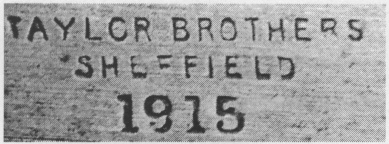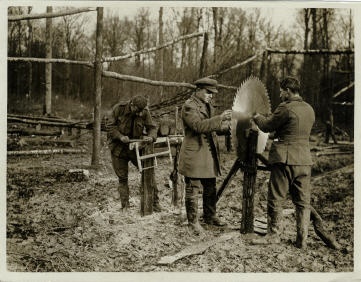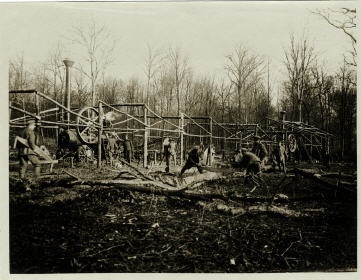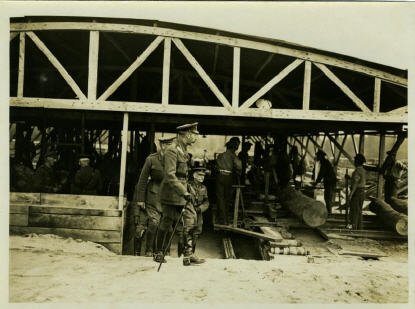The photographs here throw a tiny light on an aspect of warfare which is seldom talked about - the support systems for the actual fighting. We are so used to seeing images of men going over the top to their death that it is easy to forget that huge numbers lived and worked behind the lines, building shelter, feeding the troops, laying rail and road ways and transporting materials.
It is quite common to find saws (and perhaps other tools - my own experience is too limited to know) dated between 1914 and 1918, as this example shows.

Although this is a rip saw, the government bought saws of all types*, right down to small dovetail saws that would appear to have been useless to an army in the field (they probably were, but, judging by the strange things that appear in today’s government surplus sales, that would not have deterred the requisitioning department.) The small saws survive better than the big 2-man cross cut saws in one of the pictures, which have gone the way of almost every other saw of that type and period.
Readers can perhaps amuse themselves providing captions that convey the astonishment one feels today to see the risks men took, or were obliged to take, in using these machines. The contrast between the relaxed pipe-in-mouth setting up of the new circular, and putting the saw into action is something like the difference between life before and during a battle. There is also a striking contrast between the boots of the king, arriving to inspect a big new sawmill, and those of the men in the woods
.


* I recently acquired a pruning saw dated 1943: it is even more difficult to see how this might ever have been considered a necessity in defeating Hitler.
This article by Simon Barley originally appeared in TATHS Newsletter 105, Summer 2009.